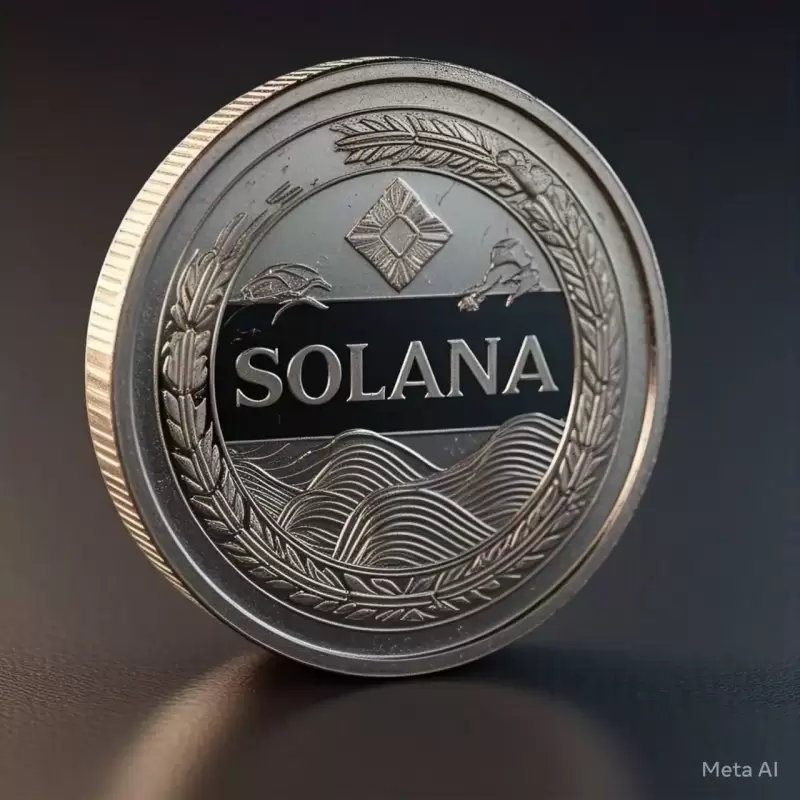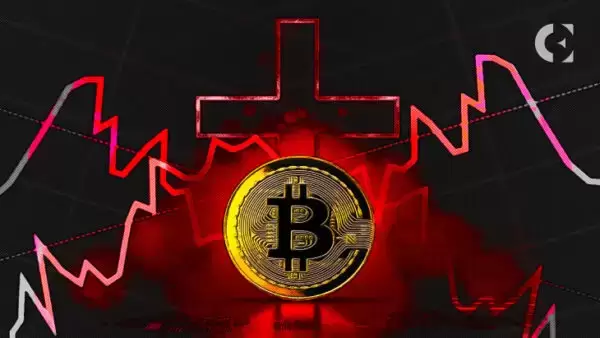 |
|
 |
|
 |
|
 |
|
 |
|
 |
|
 |
|
 |
|
 |
|
 |
|
 |
|
 |
|
 |
|
 |
|
 |
|
暗号通貨のニュース記事
L1覇権? SolanaのYakovenkoはレイヤー2の物語に挑戦し、ブロックチェーンのスケーラビリティと将来のアーキテクチャに関する議論を引き起こします
2025/03/25 17:10
Cryptocurrencyの風景は、Solanaの共同設立者であるAnatoly Yakovenkoが、ブロックチェーンのスケーリングに関する一般的な業界の物語に大胆に挑戦しているため、重要なイデオロギー的衝突を目撃しています。

An ideological clash is brewing in the heart of the cryptocurrency landscape, specifically regarding the best strategy for scaling blockchain technology. Anatoly Yakovenko, co-founder of Solana (SOL), is assertively challenging the industry narrative by stating that Layer-1 (L1) blockchains, like Solana, can achieve both speed and cost-efficiency without needing Layer-2 (L2) solutions.
イデオロギーの衝突は、特にブロックチェーンテクノロジーのスケーリングのための最良の戦略に関して、暗号通貨の景観の中心で醸造されています。 Solana(SOL)の共同設立者であるAnatoly Yakovenkoは、Solanaのようなレイヤー1(L1)ブロックチェーンは、レイヤー2(L2)ソリューションを必要とせずに速度と費用効率の両方を達成できると述べて、業界の物語に断定的に挑戦しています。
This assertion directly contradicts the widely accepted belief that L2s are crucial for enhancing blockchain scalability and performance, setting the stage for a heated debate on the optimal architecture for decentralized networks.
このアサーションは、L2がブロックチェーンのスケーラビリティとパフォーマンスを向上させるために重要であるという広く受け入れられている信念と直接矛盾し、分散ネットワークの最適なアーキテクチャに関する激しい議論の段階を設定します。
An L1-Centric Vision: Efficiency Without Layers
L1中心の視力:層のない効率
L1中心の視力:層のない効率
Yakovenko’s critique of L2 solutions stems from his belief that L1 blockchains, through their native design, can be sufficiently fast, cheap, and secure. He maintains that L2 solutions, despite aiming to augment performance, ultimately introduce new complexities and dependencies.
L2ソリューションに対するYakovenkoの批判は、L1ブロックチェーンがネイティブのデザインを通じて、十分に速く、安く、安全であるという彼の信念に由来しています。彼は、パフォーマンスを増強することを目指しているにもかかわらず、L2ソリューションは最終的に新しい複雑さと依存関係を導入すると主張しています。
“I don’t think we need anything other than the base layer to be fast enough, and we can make it fast enough,” Yakovenko asserts.
「基本層以外が十分に速くなる必要はないと思います。十分に速くすることができます」とYakovenkoは主張します。
His skepticism extends to Ethereum’s (ETH) scaling model, which he views as pivoting too quickly to L2 solutions, to the detriment of the base layer.
彼の懐疑論は、Ethereumの(ETH)スケーリングモデルにまで及びます。彼は、L2ソリューションに速すぎて基本層を損なうと考えています。
“It feels like we’re moving away from the base layer too quickly. We’re going to have a very slow base layer, and then we’re going to have a lot of L2s that are going to be dependent on it.”
「基本層から離れすぎているように感じます。非常に遅いベースレイヤーがあり、それに依存する多くのL2を持つことになります。」
Yakovenko’s L1 advocacy is intrinsically linked to Solana’s ambition to challenge Ethereum’s dominance as the leading L1 network. Solana, known for its high throughput and low transaction fees, aims to provide a competitive ecosystem for developers and users.
YakovenkoのL1アドボカシーは、主要なL1ネットワークとしてのEthereumの支配に挑戦するというSolanaの野望と本質的にリンクされています。スループットと低い取引手数料で知られるSolanaは、開発者とユーザーに競争力のあるエコシステムを提供することを目指しています。
“We can get to a place where the base chain is fast enough, and we don’t need anything else,” he adds, highlighting Solana’s potential to achieve optimal performance without resorting to L2 solutions.
「ベースチェーンが十分に速い場所に到達することができ、他に何も必要ありません」と彼は付け加え、L2ソリューションに頼らずに最適なパフォーマンスを達成するソラナの可能性を強調しています。
Yakovenko’s bold stance has sparked a lively debate within the cryptocurrency community, with varying perspectives on the future of blockchain scaling. Some agree with his vision of high-performance L1s, while others maintain that L2 solutions are necessary to handle the increasing demand for blockchain applications.
Yakovenkoの大胆なスタンスは、ブロックチェーンのスケーリングの将来についてさまざまな視点で、暗号通貨コミュニティ内で活発な議論を引き起こしました。高性能L1のビジョンに同意する人もいれば、ブロックチェーンアプリケーションの需要の増加に対処するためにL2ソリューションが必要であると主張する人もいます。
As the cryptocurrency industry continues to evolve, the discussion about the best scaling strategy will undoubtedly persist. Yakovenko’s vision of a future dominated by high-performance L1s challenges the prevailing consensus on blockchain architecture, setting the stage for an interesting chapter in the development of decentralized technology.
暗号通貨業界が進化し続けるにつれて、最良のスケーリング戦略に関する議論は間違いなく続くでしょう。高性能L1Sに支配された将来のヤコベンコのビジョンは、ブロックチェーンアーキテクチャの一般的なコンセンサスに挑戦し、分散技術の開発における興味深い章の舞台を設定します。
Anatoly Yakovenko, the co-founder of Anatoly, has sparked a critical debate about the future of blockchain scaling, rolling up his sleeves to challenge the accepted narrative. In a recent interview, Yakovenko asserted that Layer-1 (L1) blockchains can achieve both speed and cost-efficiency without needing Layer-2 (L2) solutions.
アナトリーの共同設立者であるアナトリー・ヤコヴェンコは、ブロックチェーンのスケーリングの未来についての批判的な議論を引き起こし、受け入れられた物語に挑戦するために袖を巻き上げました。最近のインタビューで、Yakovenkoは、Layer-1(L1)ブロックチェーンがレイヤー2(L2)ソリューションを必要とせずに速度と費用効率の両方を達成できると主張しました。
This assertion directly contradicts the widely accepted belief that L2s are crucial for enhancing blockchain scalability and performance, setting the stage for a heated discussion on the optimal architecture for decentralized networks.
このアサーションは、L2がブロックチェーンのスケーラビリティとパフォーマンスを向上させるために重要であるという広く受け入れられている信念と直接矛盾し、分散ネットワークの最適なアーキテクチャに関する加熱された議論の段階を設定します。
An L1-Centric Vision: Efficiency Without Layers
L1中心の視力:層のない効率
Yakovenko’s critique of L2 solutions stems from his belief that L1 blockchains, through their native design, can be sufficiently fast, cheap, and secure. He maintains that L2 solutions, despite aiming to augment performance, ultimately introduce new complexities and dependencies.
L2ソリューションに対するYakovenkoの批判は、L1ブロックチェーンがネイティブのデザインを通じて、十分に速く、安く、安全であるという彼の信念に由来しています。彼は、パフォーマンスを増強することを目指しているにもかかわらず、L2ソリューションは最終的に新しい複雑さと依存関係を導入すると主張しています。
“I don’t think we need anything other than the base layer to be fast enough, and we can make it fast enough,” Yakovenko asserts.
「基本層以外が十分に速くなる必要はないと思います。十分に速くすることができます」とYakovenkoは主張します。
His skepticism extends to Ethereum’s scaling model, which he views as pivoting too quickly to L2 solutions, to the detriment of the base layer.
彼の懐疑論は、イーサリアムのスケーリングモデルにまで及びます。彼は、それをL2ソリューションに速すぎて基本層を損なうものと見なしています。
“It feels like we’re moving away from the base layer too quickly. We’re going to have a very slow base layer, and then we’re going to have a lot of L2s that are going to be dependent on it.”
「基本層から離れすぎているように感じます。非常に遅いベースレイヤーがあり、それに依存する多くのL2を持つことになります。」
Yakovenko’s L1 advocacy is intrinsically linked to Solana’s ambition to challenge Ethereum’s dominance as the leading L1 network. Solana, known for its high throughput and low transaction fees, aims to provide a competitive ecosystem for developers and users.
YakovenkoのL1アドボカシーは、主要なL1ネットワークとしてのEthereumの支配に挑戦するというSolanaの野望と本質的にリンクされています。スループットと低い取引手数料で知られるSolanaは、開発者とユーザーに競争力のあるエコシステムを提供することを目指しています。
“We can get to a place where the base chain is fast enough, and we don’t need anything else,” he adds, highlighting Solana’s potential to achieve optimal performance without resorting to L2 solutions.
「ベースチェーンが十分に速い場所に到達することができ、他に何も必要ありません」と彼は付け加え、L2ソリューションに頼らずに最適なパフォーマンスを達成するソラナの可能性を強調しています。
Yakovenko’s bold stance has sparked a lively debate within the cryptocurrency community, with varying perspectives on the future of blockchain scaling. Some agree with his vision of high-performance L1s, while others maintain that L2 solutions are necessary to handle the increasing demand for blockchain applications.
Yakovenkoの大胆なスタンスは、ブロックチェーンのスケーリングの将来についてさまざまな視点で、暗号通貨コミュニティ内で活発な議論を引き起こしました。高性能L1のビジョンに同意する人もいれば、ブロックチェーンアプリケーションの需要の増加に対処するためにL2ソリューションが必要であると主張する人もいます。
As the cryptocurrency industry continues to evolve, the discussion about the best scaling strategy will undoubtedly persist. Yakovenko’s vision of a future dominated by high
暗号通貨業界が進化し続けるにつれて、最良のスケーリング戦略に関する議論は間違いなく続くでしょう。ヤコヴェンコの将来のビジョンは高く支配されています
免責事項:info@kdj.com
提供される情報は取引に関するアドバイスではありません。 kdj.com は、この記事で提供される情報に基づいて行われた投資に対して一切の責任を負いません。暗号通貨は変動性が高いため、十分な調査を行った上で慎重に投資することを強くお勧めします。
このウェブサイトで使用されているコンテンツが著作権を侵害していると思われる場合は、直ちに当社 (info@kdj.com) までご連絡ください。速やかに削除させていただきます。




























































